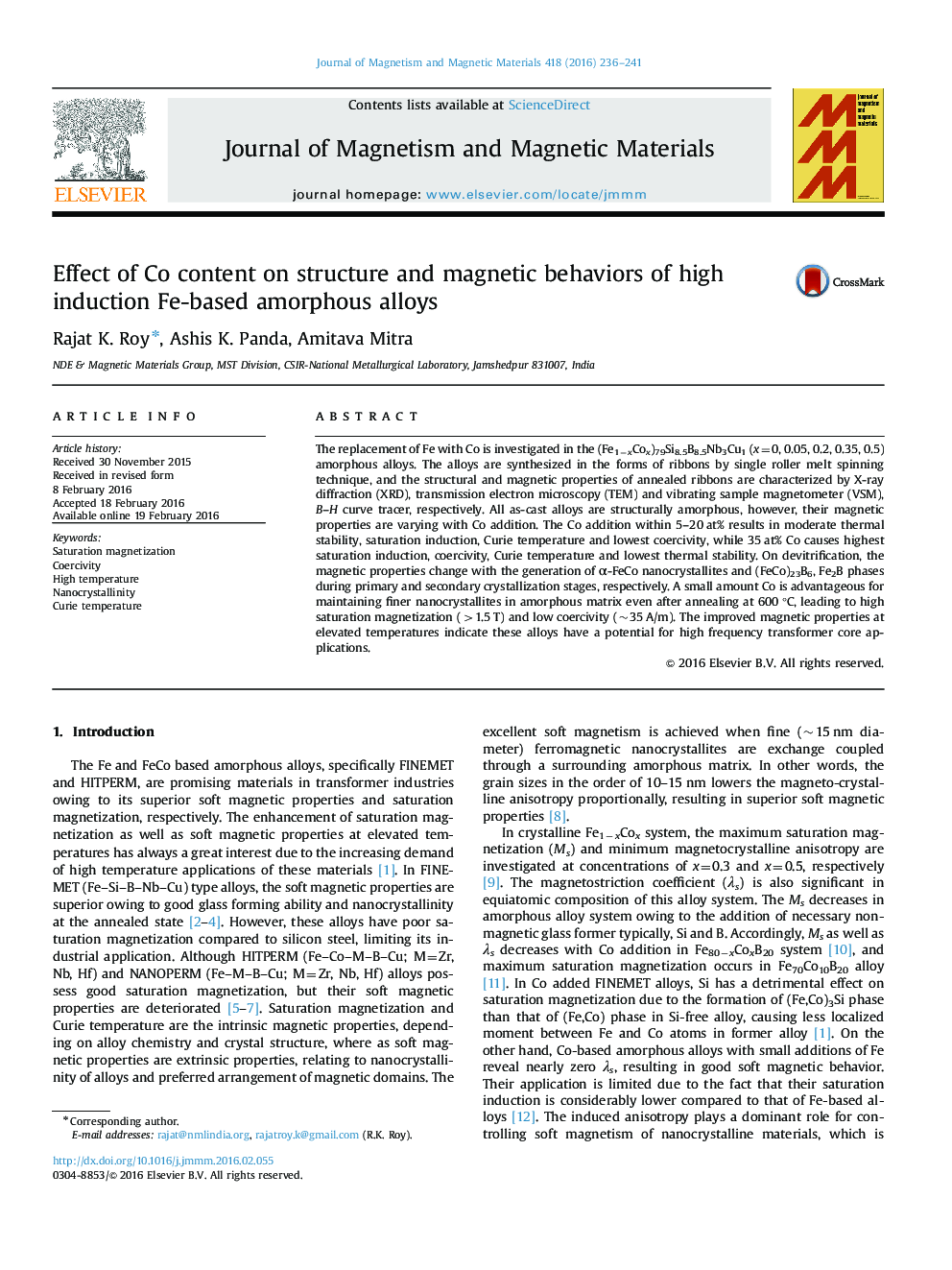| Article ID | Journal | Published Year | Pages | File Type |
|---|---|---|---|---|
| 1798070 | Journal of Magnetism and Magnetic Materials | 2016 | 6 Pages |
•The structural and magnetic behaviors of Fe based amorphous alloys have been investigated with the effect of Co content.•The Co has no adverse effect on amorphization of alloys.•A small amount Co causes the superior improvement of magnetic properties at elevated temperatures.•Therefore, it is important not only for academic research but also for industrial applied research.
The replacement of Fe with Co is investigated in the (Fe1−xCox)79Si8.5B8.5Nb3Cu1 (x=0, 0.05, 0.2, 0.35, 0.5) amorphous alloys. The alloys are synthesized in the forms of ribbons by single roller melt spinning technique, and the structural and magnetic properties of annealed ribbons are characterized by X-ray diffraction (XRD), transmission electron microscopy (TEM) and vibrating sample magnetometer (VSM), B–H curve tracer, respectively. All as-cast alloys are structurally amorphous, however, their magnetic properties are varying with Co addition. The Co addition within 5–20 at% results in moderate thermal stability, saturation induction, Curie temperature and lowest coercivity, while 35 at% Co causes highest saturation induction, coercivity, Curie temperature and lowest thermal stability. On devitrification, the magnetic properties change with the generation of α-FeCo nanocrystallites and (FeCo)23B6, Fe2B phases during primary and secondary crystallization stages, respectively. A small amount Co is advantageous for maintaining finer nanocrystallites in amorphous matrix even after annealing at 600 °C, leading to high saturation magnetization (>1.5 T) and low coercivity (~35 A/m). The improved magnetic properties at elevated temperatures indicate these alloys have a potential for high frequency transformer core applications.
